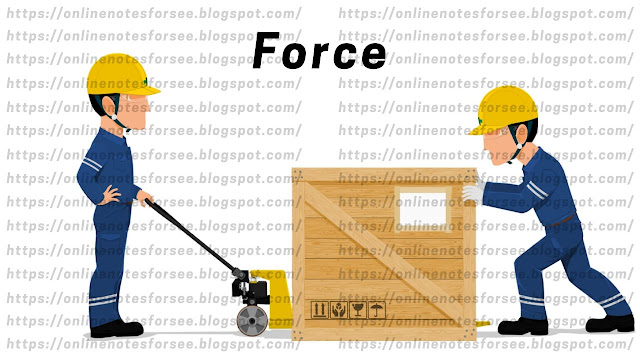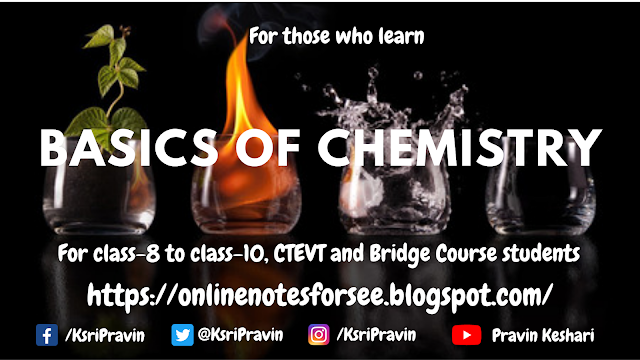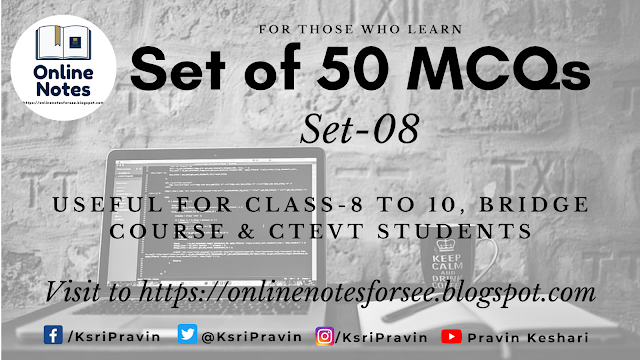Classification of Elements || Solved Q/A for S.E.E. - Exam || Part-1
Classification of Elements
Part-1
Very short questions and answers for S.E.E. students
Questions and answers to practice for S.E.E. examination
1) On what basis did Mendeleev form the periodic table?
Answer: Mendeleev in 1869 A.D. formed the periodic table with the increasing order of the atomic weights of elements.
2) On what basis did Moseley form the periodic table?
Answer: Henery Mosele (1913 A.D.) formed the periodic table by arranging the elements in the increasing order of their atomic numbers.
3) Write the position of lanthanides in the periodic table.
Answer: Lanthanides are placed on f-block at the bottom of the modern periodic table.
4) What are noble gases?
Answer: Noble gases are inert and non-reactive gases like He, Ne, Ar, Kr, Xe andRn.
5) Where are inert gases placed in the modern periodic table? What is the specialty of their outermost shells?
Answer: Inert gases are placed in the extreme right side of the modern periodic table in the zero group. Their outermost shells are completely fulfilled.
6) What are lanthanides and actinides?
Answer: Elements with the atomic numbers from 58 to 71 after Lanthaanum (La) are called Lanthanides. Similarly, the elements with the atomic numbers from 90 to 103 after Actinium (Ac) are called Actinides.
7) Define transition metals with any two examples.
Answer: The metals of d-block which can lose electrons from two outer shells to combine with other elements are called transition metals. For example, Iron (Fe), Copper (Cu), etc.
8) Write down the position of transition metals in modern periodic table.
Answer: Transition metals are placed in d-block of modern periodic table.
9) How many electrons does sub-shell d have?
Answer: The sub-shell d can accommodate maximum 10 electrons.
10) What are valance electrons?
Answer: The electrons present in the outermost orbit of an atom is called valance electrons.
11) Write the name of the groups, in which very active metals and very active non-metals are placed in modern periodic table.
Answer: Very active metals are placed in group IA (1) and very active non-metals are placed in group VIIA (17) of modern periodic table.
12) What do you mean by 'duplet state'? Give one example.
Answer: The state of an atom in which the outermost shell of the atom has the capacity to fill only two electrons is called duplet state. Example: the state of a Helium (He) is callled duplet state.
13) What is meant by octet state? Give one example.
Answer: The state of an atom in which the outermost shell of the atom has the capacity to fill only eight electrons is called octet state. Example: the state of Neon (Ne) atom is called octet state.
14) State the 'Modern Periodic Law'.
Answer: Modern Periodic Law states that, "The physical and chemical properties of elements are periodic function of their own atomic numbers".
15) State Mendeleev's periodic law.
Answer: Mendeleev's periodic rule states that "the physical and chemical properties of elements are a periodic function of their atomic weights."
16) What are halogens?
Answer: Halogens are the members of group 7 having seven electrons in the valance shell.
17) What are alkaline earth metals?
Answer: Alkaline earth metals are reactive metals of group IIA having two valance electrons. They are Be, Mg, Ca, Sr, Ba and Ra.
18) What are p-block elements?
Answer: The elements of group 3,4,5,6,7 including all elements of zero group except Helium are called p-block elements.
19) What is 'Periodic table'?
Answer: A table in which elements are classified into various blocks, periods and groups on the basis of their similarities and dissimilarities is called periodic table.
20) State octet rule.
Answer: The rule of arrangement of electrons in atom in which 8 electrons are placed in valance shell is called the octet rule.
More questions will be given in another blog post.
____________________________________________________________________________________
More questions will be given in another blog post.
____________________________________________________________________________________












Comments
Post a Comment
Please do not comment any spam link in the comment box.